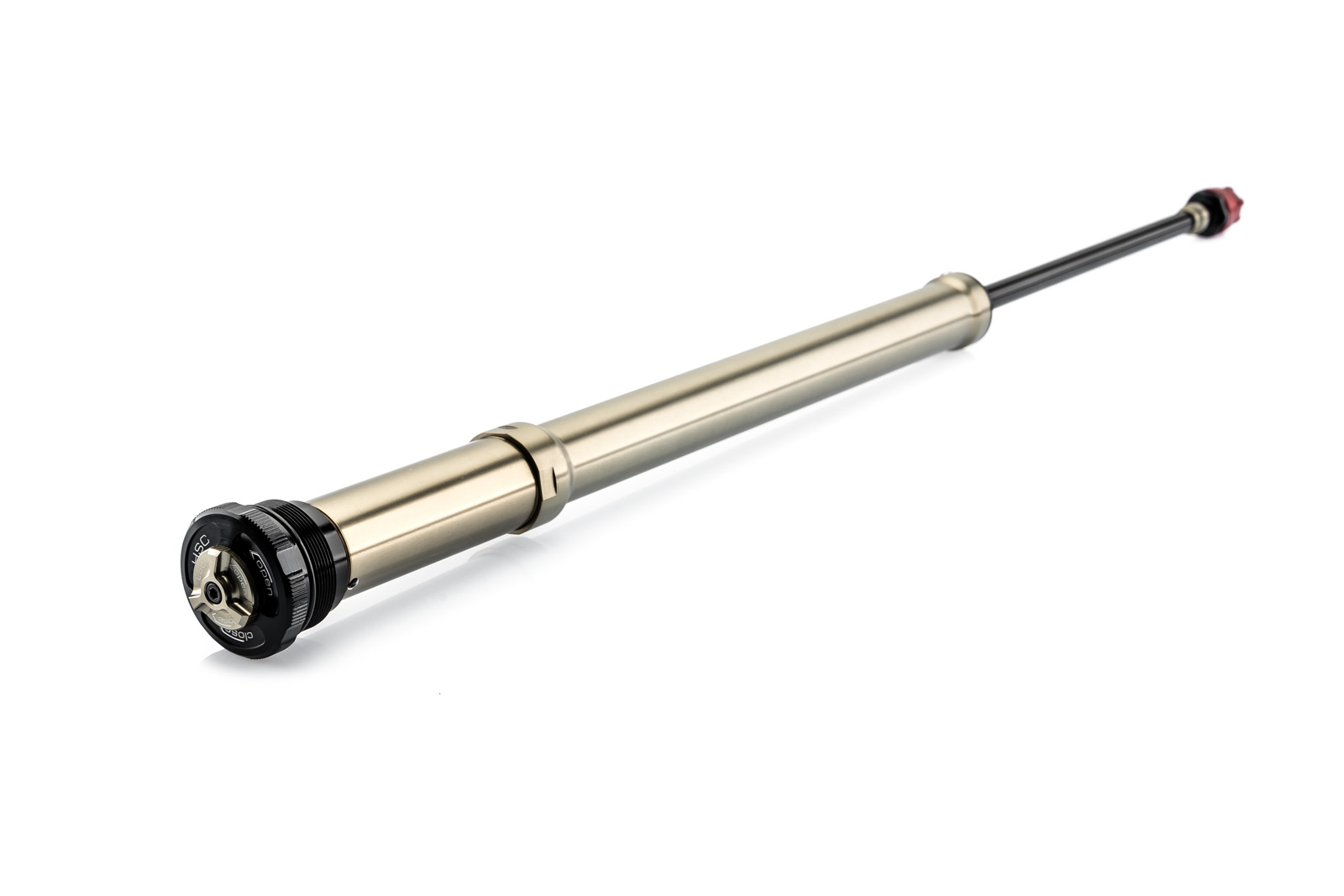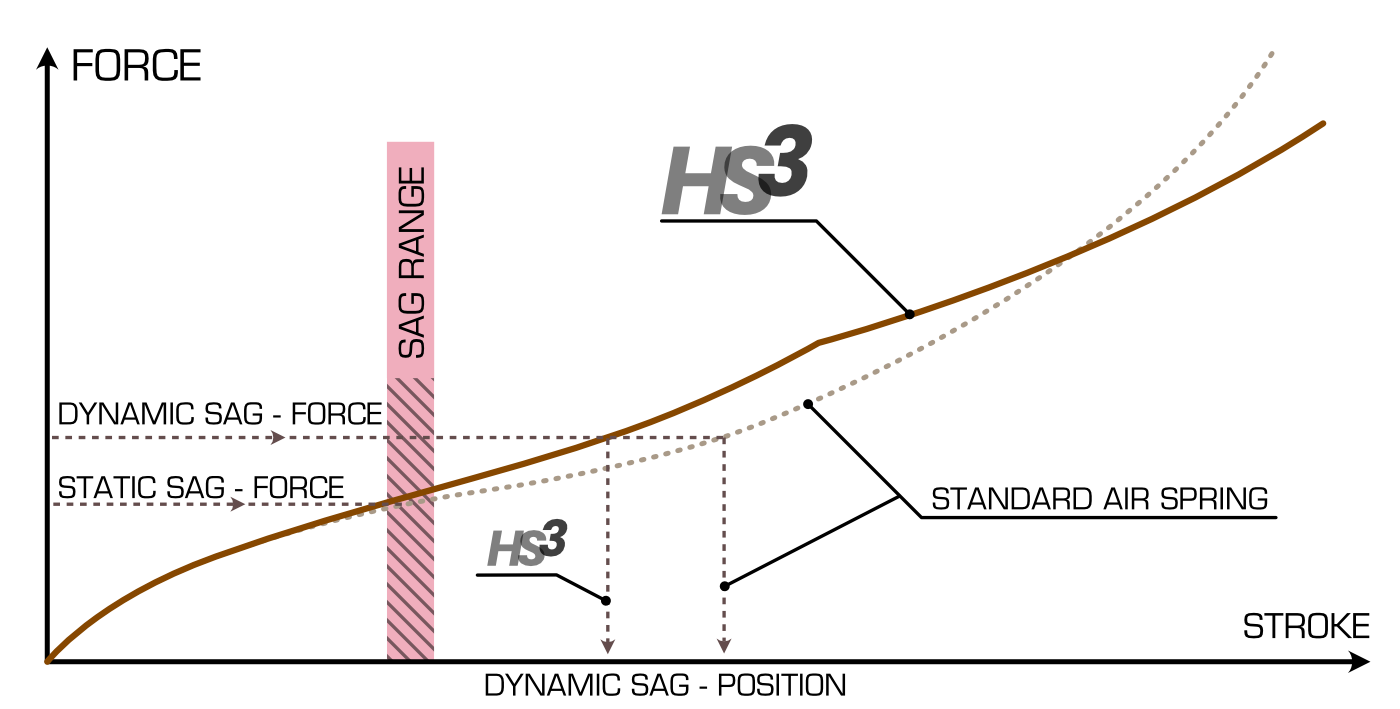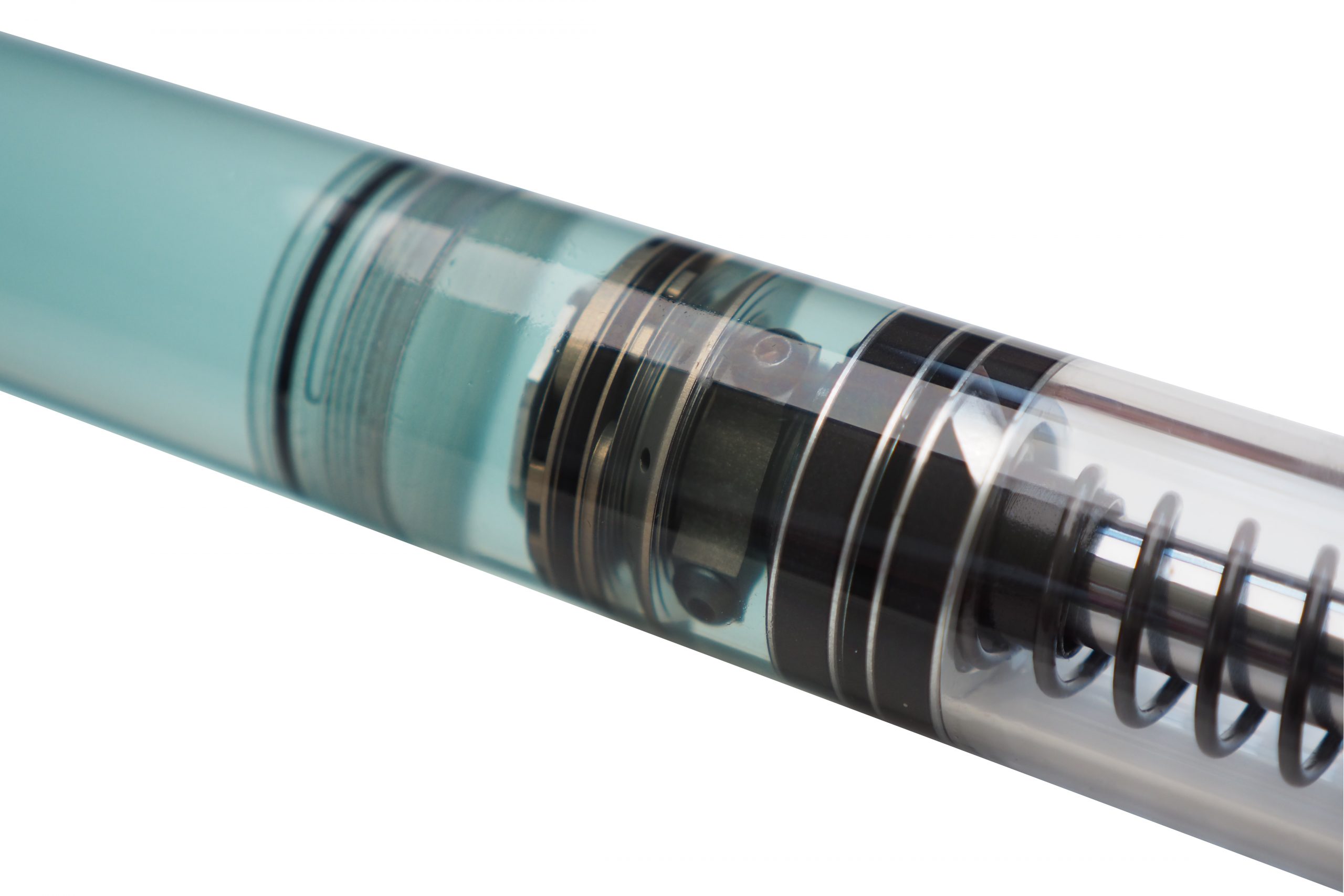In short: suppleness AND support
EXT ERA fork carries a lot of tech and has price tag to match. Unique spring system claims unparelled levels of consistency throughout the stroke.
>>> Best mountain bike suspension forks 2020
EXT ERA need to know
- 36mm stanchion fork
- 140/150/160/170mm travel
- HS3 hybrid air spring
- 29in only
- 44mm fork offset
- Weight: 2,280g claimed
- 3 way adjustable: low and high speed ‘Bump’ and ‘Rebound’
- New crown design: forged 7050 T6 increase stiffness
- ERA Coil Spring version available soon
- Price: £1,590

The EXT ERA fork uses a spring system dubbed HS3. This spring array has two positive air chambers (as opposed to the usual single positive air chamber) and these chambers work with a single ‘self activating’ negative air chamber. This unique spring combo is combined with a high volume damper cartridge which EXT claims to offer “incredible tuning capability and sets a new level for support in a suspension fork.”

Ultimately the EXT ERA is heavily focused on mid-stroke support. And EXT elaborate this point by detailing the two different types of sag that operate on a mountain bike.

Wait. Two sags? What’s that about? Basically there is sag called ‘static sag’ and another sag called ‘dynamic sag’. Static sag is normal sag ie. how many mm the fork compresses under rider weight, on flat ground, and not actually travelling along. Dynamic sag is how many mm into the travel that the fork sits when actually riding on the trail.

The dynamic sag point is kind of where you begin to enter the mid-stroke section of the fork travel. Typically it is tricky to get a suspension fork to give out ‘The Holy Trinity’ of characteristics: inital ‘off-the-top’ suppleness, mid-stroke support and a useable full-travel (no harsh bottoming, nor overly extreme ramp-up).
Often the user has to choose two out of these three charactristics and lose out on the other eg. supple around sag and controlled at full travel but missing out on mid-stroke support. Or, mid-stroke support and controlled full-travel but harsh initial stroke.

Why so focussed on mid-stroke support? EXT explain: “This means the bike can stay within a more efficient head angle to the fork/frame system so absorbing obstacles induces smaller changes to the bike’s geometry giving a more stable ride. Good support also means more available travel for compression and more chance to avoid bottoming out.”
As well as a focus on mid-stroke, the EXT ERA fork has been designed to operate with as low a level of fritcion as possible. There is a small but important coil spring in the HS3 system too, which helps overcome sliding friction. As well as their own dedicated oil, EXT have developed a DU bushing material. This material was actually developed in part from EXT’s experience in World Champs rally cars. EXT also went to the trouble of sourcing their own slick coatings for the damping cartridge and anyof the steel shafts in the fork. Topping things off on the friction battling front, EXT asked RacingBros to come up with a new wiper seal.

Another aid is keeping things moving freely and consistently is chassis stiffness. While the EXT ERA’s stanchions are a trad 36mm diameter, the fork crown is something wholly different from other forks. Essentially the fork crown extends upwards and significantly overlaps on to the steerer. The result is claimed to be 20% stiffer than a regular design. Time will tell if to also helps keep creaking at bay better than other some other forks.
The magnesium lowers also have an asymmetric wall thickness for increased fore-aft stiffness.

Enough about the spring and chassis. Let’s see what the damper has to offer. The damping cartridge contains EXT’s new ‘Bump’ valve. Also called the HDRV (high dynamic range valve). This has two different shim stacks; one for mid-speed shaft speeds and one for high-speed shaft speeds. There’s a IFP (internal floating piston) in there that’s combined with a thrust bearing to improve response speed and guidance.

Inside, the high flow piston claims to “completely avoid cavitation”. The 22mm diameter piston gives around 35% more oil volume compared to other fork cartridges which should lead to increased consistency on longer descents.




